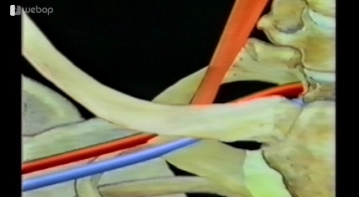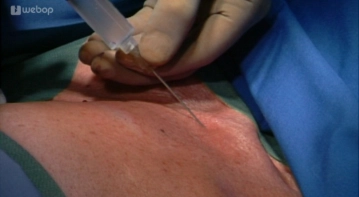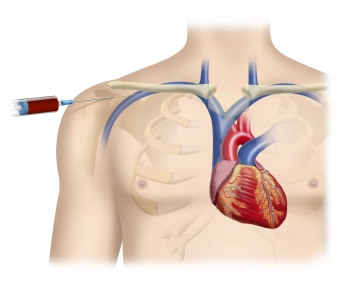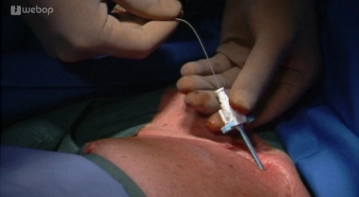Demonstration of the anatomical position of the scalene muscle, subclavian/brachial artery and vein, and the position of the clavicle in relation to the artery and vein.
-
Topography of the Subclavian Vein
-
Infiltration of the Surgical Area with Local Anesthetic
-
Puncture of the Subclavian Vein
-
Seldinger Technique
![Seldinger Technique]()
Soundsettings With confirmed intravenous position, insert the Seldinger wire through the cannula. Make an incision with the #11 scalpel and then introduce the dilator with the introducer set. Remove the wire and cover the introducer set with a finger to prevent air embolism (not always adequately shown here). Remove the dilator while the introducer set remains in place.
Insertion of the Port Catheter
Gradual insertion of the port catheter and consecutive withdrawal of the introducer set with approp
Gradual insertion of the port catheter and consecutive withdrawal of the introducer set with approp
Activate now and continue learning straight away.
Single Access
Activation of this course for 3 days.
US$9.30
inclusive VAT
Most popular offer
webop - Savings Flex
Combine our learning modules flexibly and save up to 50%.
from US$7.19 / module
US$86.33/ yearly payment
general and visceral surgery
Unlock all courses in this module.
US$14.38
/ month
US$172.70 / yearly payment





